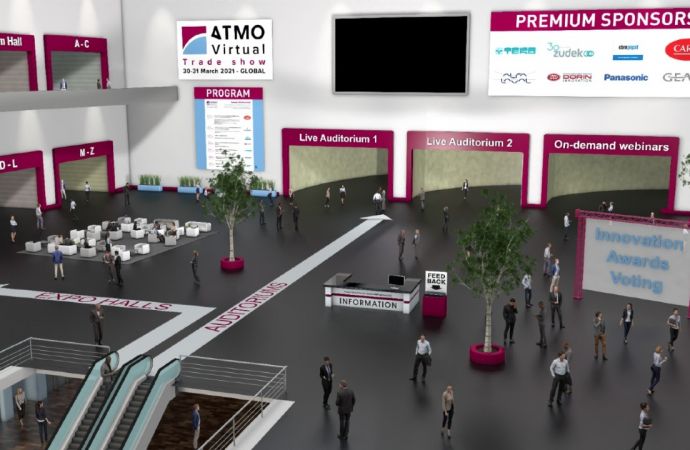ATMOsphere America 2015, organised in Atlanta on 25-26 June saw a rising trend toward the use of hydrocarbon-based refrigeration in the food service industry. Industry giants McDonalds, Starbucks and Red Bull, together with system supplier True Manufacturing came together to flesh out what’s driving the market.

Naturals make long-term business sense
Nearly everyone recognises the iconic golden arches of a McDonald’s restaurant, though not all may realise what goes on behind the scenes of this family favourite. Roy Buchert,, McDonald’s Global Energy Director explained the company’s ambitious plans to reduce its environmental impact, including moving toward the use of natural refrigerants, which according to him, isn’t just the right thing to do for the environment. The decision also makes long-term business sense. The company is already scaling up its use of small refrigeration equipment (using 150g or less of R290) in Europe, which is proving 38% more energy efficient. The company is also pilot testing medium refrigeration systems (walk-ins, milkshake machines) using natural refrigerants in Europe and ultimately plans to use natural refrigerants even in large HVAC systems. In Denmark McDonald’s has even piloted an entirely HFC-free store.
The situation in the U.S. is rather different, with natural refrigerant-based, smaller equipment only recently released. However, the market for hydrocarbon equipment is expected to develop quickly.
Things are moving much faster than we had thought, we are still in a good position and we are eager to see things move forward,” said Buchert.
For Buchert the conversion to natural refrigerants cannot be an overnight project. It is not realistic from a cost perspective to suddenly make the switch to natural refrigerants in all HVAC&R equipment, so the company is focusing on replacing end of life equipment and installing green refrigeration solutions in new restaurants.
Buchert concluded his presentation with a call to action, asking the industry for more development in order to overcome certain challenges including local regulations, lack of trained service infrastructure and higher initial costs of natural refrigerant-based equipment.
Hydrocarbon energy savings exceed manufacturers’ claims
Paul Camera, Director of Equipment and Packaging Development within the Global Research & Development at Starbucks, explained the company’s research and development team’s strategy to implement natural refrigerants into front and back of house refrigeration units. As the company hit a growth spurt in the 2000s, a significant number of units are reaching their end of life. Starbucks is conducting comprehensive testing and validation to verify energy saving claims and ensure it makes the right choice to green its stores. The plan is to transition more than 150,000 units use natural refrigerant equipment. According to Camera, so far, energy savings have even exceeded manufacturers’ claims. Starbucks next steps include finalising the business model, extending to Mexico and other markets and developing a strategy for open or high refrigerant systems such as display cases, ice machines and HVAC systems.
Energy use less than that of a single light bulb
Providing an update to her presentation at ATMOsphere America 2014 in San Francisico, Paige Dunn, CSR and Sustainability Project Lead for Red Bull North America, highlighted the major successes the company experienced with its R600a Eco Coolers in 2014. Red Bull now procures 100% hydrocarbon equipment where technically and legally feasible. It has a fleet of more than half a million hydrocarbon-based coolers on the market, accounting for about 65% of its overall cooler fleet. The company has experienced high performance and energy reductions thanks to the use of hydrocarbons and other advancements such as intelligent controls, energy efficient fans and LED lighting. According to Dunn, seven of the Red Bull Eco Can Coolers use the same amount of energy as a 100W light bulb.
Higher efficiencies, lower GWP, increasing export market demand
Charles Hon, Engineering Manager at True Manufacturing, a leading supplier of food service equipment, reported on research conducted in Europe in 2007 which found hydrocarbons to be greener and more efficient refrigeration solutions, highlighting that while there is no prescription for the best refrigerant to use, for True’s market share, R290 has proven the best option. According to Hon, working with R290 has improved processes within the company’s factory with regard to leak detection and charging, giving more reliability to its customers. The company has been investing in training to prepare the market for hydrocarbons, working with organisations like RSES, and ensuring the supplier base is prepared.
For Hon, the major market drivers for R290 are export market demand, lower GWP, and higher efficiencies.
MORE INFORMATION
Related stories



